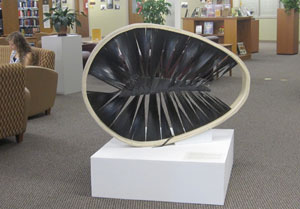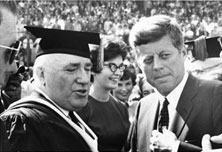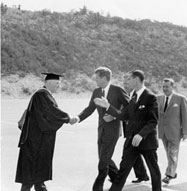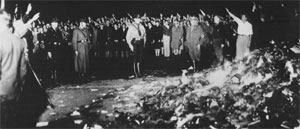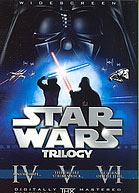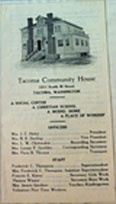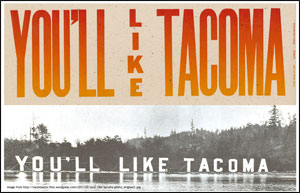 So many people have expressed interest in the You’ll Like Tacoma poster so we wanted to provide a bit more information!
So many people have expressed interest in the You’ll Like Tacoma poster so we wanted to provide a bit more information!
The Tacoma Public Library has a postcard of the iconic image in their collection and you can find it online at:
http://search.tacomapubliclibrary.org/postcard/postcardfull.asp?db=1426
The Washington State Historical Society has a copy negative from what looks to be another copy of the same postcard: http://collections.washingtonhistory.org/details.aspx?id=111866
We have checked with the Public Library and none has found who owns the original photo or negative.
This Tacoma promotion was seen on the lake shore at the Alaska Yukon Pacific Exposition (AYPE) in Seattle. This fair took place from June to October, 1909 at the site of the present-day University of Washington campus. It featured the commerce and culture of the Pacific Northwest, Alaska/Yukon, and the Pacific Rim regions, and was meant to be both edifying and entertaining.
In November of 2012, Jessica Spring, designed and printed the modern rendition of the You’ll Like Tacoma poster in her studio on Yakima Avenue.

